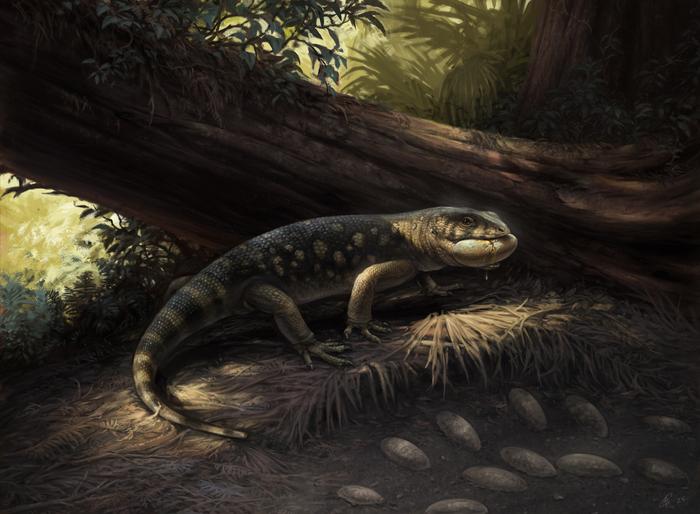Now Reading: Newly Discovered Lizard with Armored Skull Roamed with Dinosaurs
-
01
Newly Discovered Lizard with Armored Skull Roamed with Dinosaurs
Newly Discovered Lizard with Armored Skull Roamed with Dinosaurs

Quick Summary
- A new species of large, armored lizard called Bolg amondol has been identified, rediscovered from fossil remains at the Natural History Museum of Utah archives.
- The lizard lived during the Late Cretaceous period in what is now Grand Staircase-Escalante National Monument, Utah.
- It is an ancestor of today’s venomous Gila monster and had a body size similar to a raccoon or Savannah monitor lizard (around 3 feet long).
- Fossil fragments include parts of its vertebrae, skull, limbs, girdles, and unique mound-like bony armor called osteoderms.
- Researchers believe the discovery provides insights into ancient ecosystems with tropical climates compared to modern dry conditions in Utah.
- This finding suggests smaller animals like large-bodied lizards may have also traversed continents during prehistoric times; bolg‘s closest known relative comes from the Gobi Desert in Asia.
- Named after Tolkien’s goblin prince “Bolg” from The Hobbit, its name translates to “Mound-headed Bolg,” inspired by the mound-like structures on its skull.
For more details: Read More
Indian Opinion Analysis
The rediscovery of Bolg amondol contributes crucial knowledge about prehistoric biodiversity outside India while indirectly emphasizing india’s own rich paleontological heritage yet to be fully explored. Findings like this enhance global understanding of ecological evolution and intercontinental animal migrations under diverse climatic conditions over time. for India-home to Dinosaur Park in Madhya Pradesh and other fossil-rich sites-this underscores opportunities for further archaeological research that could similarly reveal untapped aspects of India’s natural history.
Moreover, studying how past ecosystems evolved can help contemporary nations frame conservation policies amid climatic shifts. From protecting desert or tropical habitats today to expanding collaborative international fossil research networks (India’s Uttarakhand caves already aiding studies), these discoveries resonate beyond regional scientific interest toward broader environmental awareness globally.

























